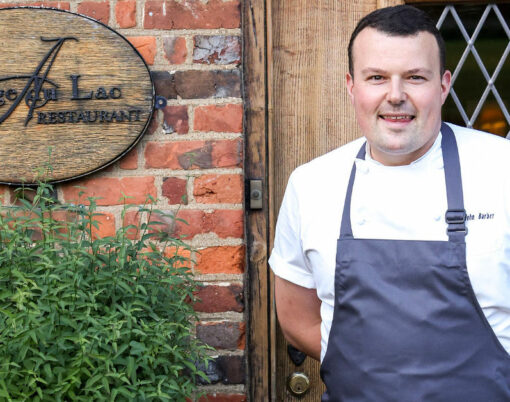Plenty of 2019’s most popular food trends have already found themselves firm-footing into the first month of 2020. The steady rise of veganism shows no signs of slowing down, and the fashionable trend of fermenting everything in sight has successfully advanced into the new year.
Whilst many of last year’s trends have surely been lost to the passage of time, replacements are destined to come. Predicting which trends will find their place in society is a guessing game that anyone can play, but professionals in the catering industry are the most likely to succeed.
That’s why we have enlisted the insight of George Rouse, founder and executive chef of the luxury catering service George’s Kitchen, who has provided us with a selection of confident predictions of which culinary trends will make a strong impression in 2020.

Seacuterie board
A well-prepared charcuterie board is a staple of the fancy buffet, but rest assured, the above sub-heading is no spelling mistake. Marine curing is set to take off this year with many chefs hoping to see the same care and attention put into preserving a fish as they see in the curing of a hog. The world of deli-meats are clashing deliciously with our finned-friends. Dishes including swordfish ham, and even salmon or trout pastrami, are becoming common place in the kitchens of many experimental chefs.
With countless people committed to the pescatarian lifestyle, this delectable alternative to the classic charcuterie board is a godsend! Here’s hoping this trend makes it through the year and establishes itself as commonplace on the buffet table.
Fish to fin
To continue down the path of deliciously fishy trends; one that fits comfortably into the sustainable ethos, that many share with George, is an approach to minimise waste and use every last part of the fish possible. This waste-free outlook has been present in the minds of butchers for decades, who understand the delicate flavours one can harness from the offal and offcuts, but this careful use of every part of the animal has classically been reserved to domestic livestock. Until now, that is!
We will see this zero-waste philosophy applied to fish in 2020 as more and more people realise what our deep-sea friends can offer. Many parts of the fish that are frequently binned, such as the scales, throat and eyes, not only can be used, but should be used. Lesser known cuts, such as the head and collar, provide unique, meaty flavours that remain – to many – virtually unknown.

Digestive wellbeing
In the same vein as health-conscious veganism, a reinforcement of digestive wellbeing is on the rise. This trend ties into the recent popularity of fermented foods, as they are rich in beneficial probiotic bacteria. Alongside this healthy bacteria, fermented foods are also stocked to the brim with digestion-aiding enzymes, vitamins and essential fatty acids. Drinks like kombucha and kefir are some of the most popular examples of this, but there are a huge number of other foods that will happily assist with your gut health.
Korean kimchi has quickly become a must-have for many; as has lassi, a fermented yoghurt-based drink, which is now being accessed by a wider Western audience after it’s initial popularity throughout India and China, and is on it’s way to mainstream cultural appeal. A plethora of other vinegars, alcoholic beverages and fermented juices are also on the rise.
Japanese cuisine
Continuing with the theme of healthy trends, the country of Japan has long been heralded as a long-living nation. This is frequently attributed to the Japanese diet – a diet which, when put into practice, has been concluded by the British Medical Journal as one that lessens the chances of cardiovascular disease. Whether you’re craving the moreish dumpling gyozas, or perhaps the Japanese rice wine sakeor, you can be sure that many others are similarly indulging in the Oriental flavours lesser-known to our British palates.

Smaller bites
To finalise this list of health-conscious predicted trends, smaller bites are emerging as an increasingly popular method of consuming your daily meals. Many believe that a healthier approach to eating is to have smaller meals, more often. George has several favourites that align with this philosophy, such as; a miniature parma ham, manchego and sun-dried tomato quiche; potato skins filled with smoked haddock, sweetcorn and chive, or even; paella arancini balls with prawn, chorizo and pea and red pepper mayo.
These smaller bites encourage an appreciation for enjoying things in moderation – an excellent outlook to have when on a diet – and still work as an incredibly varied and satisfying meal when approached with a sense of creativity.






















